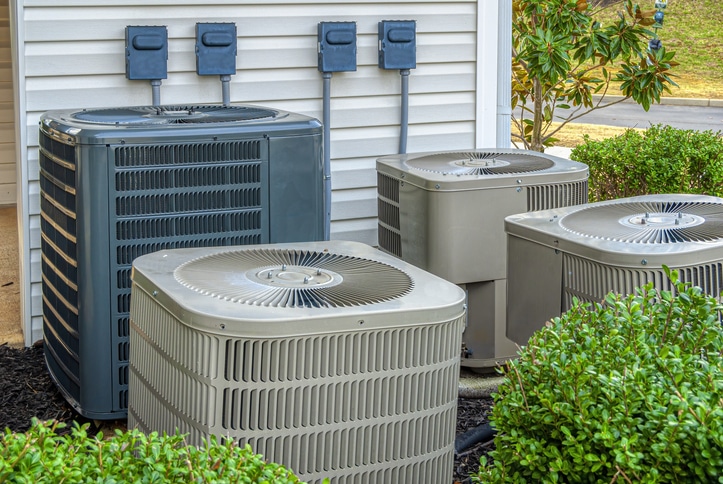How Much Electricity Does Central AC Use?
Across the board, the cost of living in 2022 is higher than it ever has been before, which has forced a lot of us to make a lot of difficult decisions / sacrifices to try and help our bottom line. If you live in a hot area, or you’re in the dog days of summer heat, it’s easy to opt for open windows and a fan instead of spending the extra cash on your electricity bill every month. But how much of a difference does running your central Air Conditioning actually make on your monthly bills?
What Is Central Air Conditioning?
It’s easy to tell if a home or location has central air or not. Air conditioning is driven by a fan outdoors, typically around the back half of the building, which blows air into your house, through a system installed in the basement or a closet, and then sends cool air out through ducts built into the structure of the building. Older structures do not have ducts, so these buildings are kept to temperature through open windows, fans, and window-mounted units. Retrofitting an old building with a modern air conditioning system can be costly upfront, but beneficial to the comfort of the homeowner.
Does Air Conditioning Use Gas or Electricity?
A common confusion/misconception is that central AC runs on gas, but that’s a mix up. Most heating systems use gas or fuel oil to heat your home, whereas air conditioning units run on electricity, but use cooling refrigerant chemicals to output cool and comfortable air. Typically, central air conditioning units have their own dedicated plug that they draw power from.

Air Conditioner Power Draw Comparison
American residencies consume an average of 11,000 kilowatt-hours (kWh) per year, however electrical draw varies based on geographic location and weather. Typically, residencies in the northeast have a significantly lower draw than a single-family detached home in the heart of Texas. But how does everything compare and how does an actual air conditioning unit factor into these power draws? Obviously everything is an approximation, but the comparison is helpful to draw your own conclusions.
How everything stacks up:
| Central Air Conditioner System | Approx. 3,500 watts/hour | Approx. $460/year |
| One Window Air Conditioner Unit | Approx. 1,200 watts/hour | Approx. $200/year |
| Ceiling Fan | Approx. 70 watts/hour | Approx. $10/year |
| Television (40” or less) | Approx. 234 watts/hour | Approx. $60/year |
| Refrigerator | Approx. 225 watts/hour | Approx. $55/year |
| Dryer | Approx. 2790 watts/hour | Approx. $104/year |
It’s easy to see why electrical bills are so steep when running an air conditioner full time in the hotter months. To stay informed about your energy consumption and how you can save, head to http://energy.gov to see where your specific appliances stack up against the rest. Consequently, it may be more understandable why some of us opt for open windows and fans to keep our houses cool – especially with the price of groceries, gas, rent, and so much more rising every day.
These days, we’re all trying in our own ways to pinch pennies and save ourselves some cash, and with that said, many of us are sacrificing comforts and leisure to not break the bank.
Works Cited:
